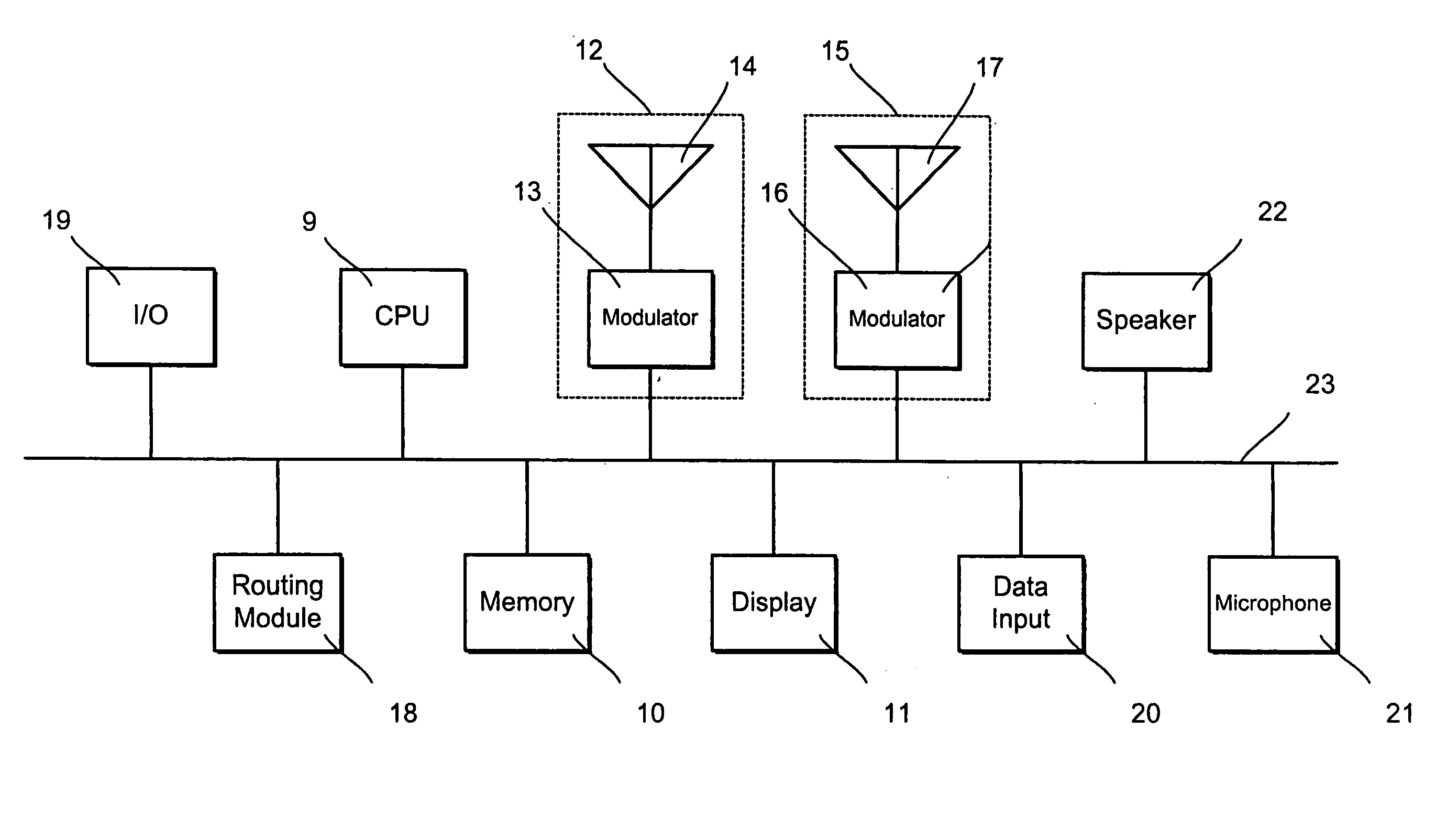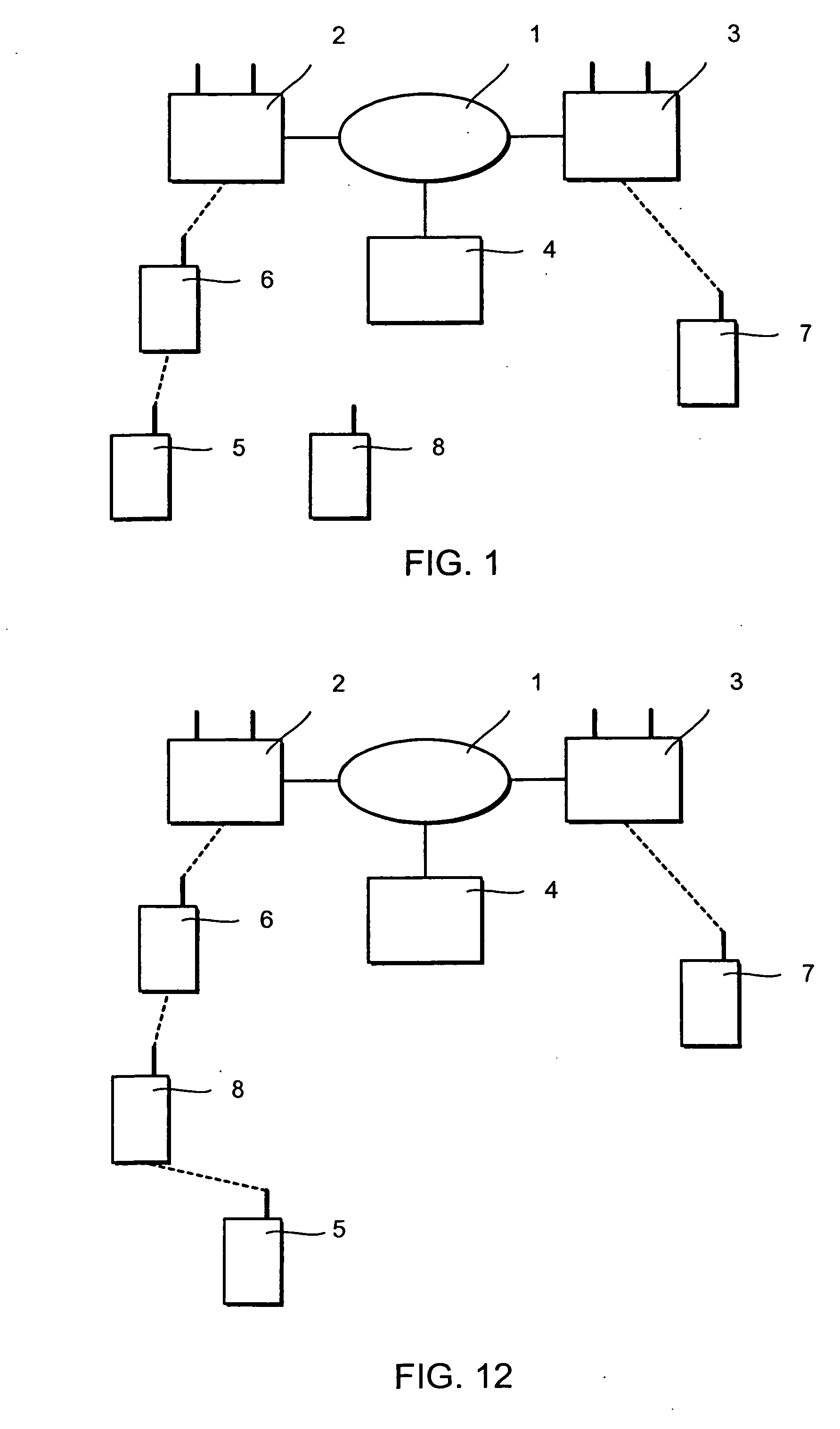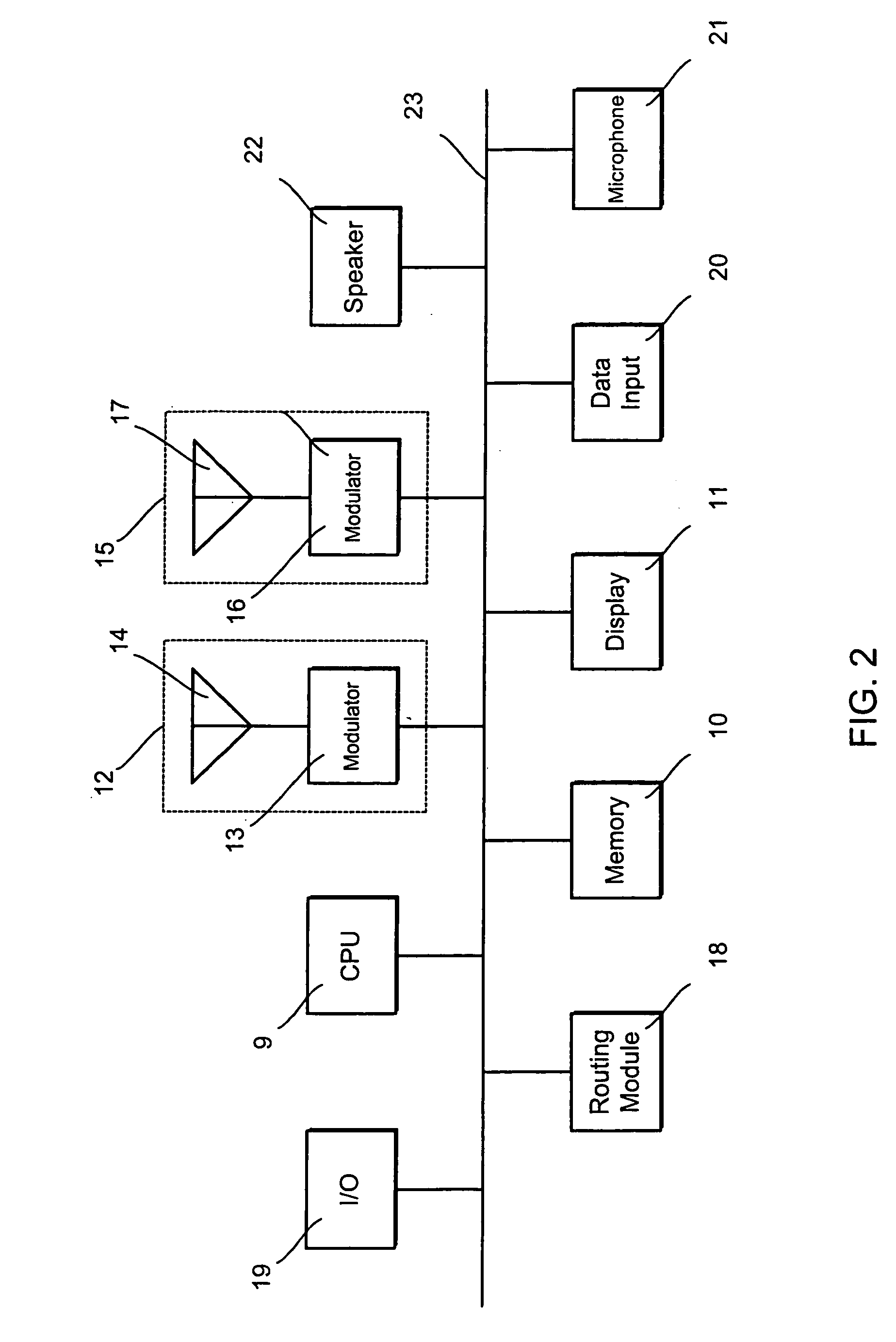Mobile communication network using mobile station with relay-function and method for rewarding relay activities of mobile station
a mobile communication network and relay technology, applied in the field of mobile communications networks, can solve the problems of inconvenient user reconnection, restricted user mobility, network reconnection is not without problems, etc., and achieve the effects of increasing network access, extending call-time of said first mobile terminal, and increasing network access
- Summary
- Abstract
- Description
- Claims
- Application Information
AI Technical Summary
Benefits of technology
Problems solved by technology
Method used
Image
Examples
Embodiment Construction
[0043] Referring to FIG. 1, in a first embodiment of the present invention, a mobile communications network 1 includes first and second base stations 2, 3. In this example, the network 1 is a public land mobile network (PLMN), such as a GSM network. The network 1 includes a server 4 for logging network use and will be described in more detail later.
[0044] A description of a GSM network can be found in “The GSM System for Mobile Communications” by Michel Mouly and Marie-Bernadette Pautet (Cell & Sys, Palaiseau, 1992).
[0045] First, second, third and fourth mobile terminals 5, 6, 7, 8 are suitable for use with the network 1. Each terminal 5, 6, 7, 8 can be used to communicate with other mobile terminals or, via an additional fixed communications network (not shown), with fixed terminals (not shown). For example, the fixed communications network can be a public switched telephone network.
[0046] A problem can sometimes arise that the first mobile terminal 5 is temporarily unable to us...
PUM
 Login to View More
Login to View More Abstract
Description
Claims
Application Information
 Login to View More
Login to View More - R&D
- Intellectual Property
- Life Sciences
- Materials
- Tech Scout
- Unparalleled Data Quality
- Higher Quality Content
- 60% Fewer Hallucinations
Browse by: Latest US Patents, China's latest patents, Technical Efficacy Thesaurus, Application Domain, Technology Topic, Popular Technical Reports.
© 2025 PatSnap. All rights reserved.Legal|Privacy policy|Modern Slavery Act Transparency Statement|Sitemap|About US| Contact US: help@patsnap.com



